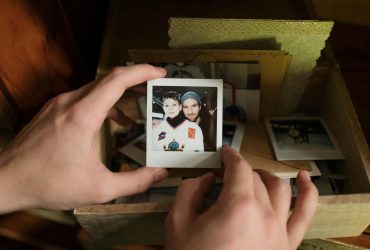One of the things that is most important to the young people we work with is staying connected to the memories of the person who died. Many young people worry that memories will be forgotten, or don’t know how to begin to think about or talk about the person after they have died. Creating a memory box for the person who died is a way to spend time thinking about them and creates a place a young person can go to spend time with the special memories of the person which can be really comforting. We believe it is healthy for young people to connect with these memories even if they feel sad and this can be an important part of the grieving process.
The idea is that young people can put in pictures or items that their loved one had or cherished. For example, some of the young people we have worked with have included their dad’s watch or their mum’s jewellery, as well as pictures or photos. Some children or young people have put things from the funeral or things after someone has died in their memory box.
You can also store items and keepsakes that remind children and young people of special days or the person that has died. For example, a birthday card or anniversary present.
But how can parents, carers and professionals use a memory box with children and young people? Here’s a step-by-step guide about how to use a memory box:
1. Find your memory box
You can, of course, use any box and decorate as you wish and this can be a lovely part of the process. A shoebox works well as it has a closeable lid and can be kept under the bed. You can also buy a purpose-built memory box, which we sell on our online shop. We’ve got lots of lovely designs, including our special Emma Bridgewater star and polka-hearts designs.
Our memory boxes have built in compartments to keep different belongings and items.
2. What to put in your bereavement memory box
Fill your memory box with items that remind you of them, and times you spent together. It could be their watch, or tie, maybe a scarf or their purse. You could include photographs and letters, a postcard from a holiday you went on together or tickets from an event or day out. How about their passport or a pair of glasses they wore? Then, when you want to remember, you can simply look through the wonderful collection of memories in the box.
Memories are very connected to our senses. Including items of clothing the person wore, smells such as perfume or shampoo or a list of their favourite songs can really help young people to connect to the memories in a meaningful way.
Try not to simply fill your bereavement memory box with random bits and bobs. Instead, make sure that each object has a story or memory attached to it. Remember you can be creative and include memories that are really personal and special to the young person.
3. Keep a note of why those items are special
Some people like to write a note for each item they put in their memory box, outlining why that item is important to them. This can be a really useful thing to do when you open your memory box in years to come. You may have forgotten why a specific picture is important, but your note will be a nice reminder.
4. Share your memories
Step four is completely optional. Some people like to keep their memories private, but if you’d like to show family and friends your memory box, then that is okay too.
If you do feel like you want to share your box, it can be really nice to share each other’s memories and talk about how those memories make you feel.
How you use your memory box is really up to you, but it can be a really useful way for young people to stay connected to the memories of the person that has died.
Other resources you might find helpful

Activities for bereaved children
Download our activities to help grieving children and young people to explore and express their feelings and emotions and to help them maintain memories of the person who has died.

Memory boxes
Our special memory boxes come in several lovely designs, including Emma Bridgewater star and polka-hearts, and contain a pouch to hold photographs and letters.


